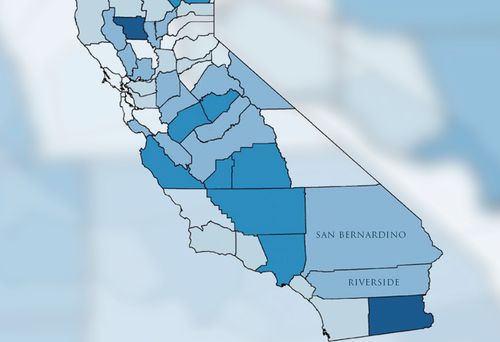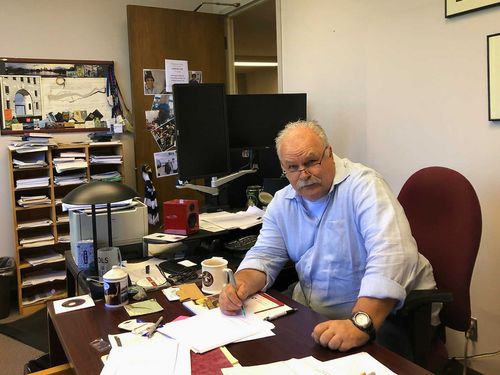When it came time to title the Lowe Institute’s annual Inland Empire economic forecast, Prof. Manfred Keil decided that “Here Comes the Sun” encapsulated the outlook for 2021.
With the recovering economy and the successful rollout of Coronavirus vaccines, Keil, who is associate director of CMC’s Lowe Institute of Political Economy and the chief economist of the Inland Empire Economic Partnership (IEEP), said he also considered, “There Will be Growth in Spring,” a reference to the 1979 Peter Sellers movie, “Being There.”
While Keil is feeling optimistic, he cautions that he is guardedly so, pointing to Italy, Germany, and France, which recently had to mandate further lockdowns after experiencing another surge in new virus infections.

“In Southern California, once we get to 70 percent of the population vaccinated or having antibodies due to having recovered from COVID, we’ll have herd immunity. This will allow Southern California residents to largely resume their normal routines. My hope is that the virus doesn’t resurge and we’ll be more like Israel — which may have just reached herd immunity—than these European countries.”
The IEEP forecast includes an optimistic estimate of GDP growth and the prediction that consumers “will be eager to visit restaurants and bars, resume travel, as well as return to regular sports and exercise activities.”
In other words, Keil said, “There’s a lot of pent-up demand” that will benefit the Inland Empire economy, which according to the forecast is “well-positioned for the recovery” since one of its major job engines, logistics (which encompasses transportation warehousing and wholesale trade), is leading the way. “The housing sector is booming. … and therefore, construction and other real estate related sectors can potentially play a major role during the year,” according to the report.
The employment outlook, however, is mixed, depending upon the sector. “Some called the last recession (2008-09), the man-cession,” Keil explained, “because it most affected construction and manufacturing, which are more male-dominated industries.” In contrast, the recession caused by the pandemic, Keil continued, could be dubbed the “she-cession,” as it has most impacted the leisure and hospitality sector, which employs mostly females and minorities. In addition, with schools closed, women put their jobs on hold in order to shoulder most of the childcare burden.
The report also addresses the effect that automation will play in the economic recovery process. “We are about see a fourth industrial revolution,” Keil said. “The level of automation that we thought would happen at the end of decade has been moved forward in response to the Coronavirus. We predict that you will see a capital labor substitution right now, which will impact the Inland Empire, where the logistics sector is what makes the area thrive.”

Keil has been analyzing and forecasting economic activity in the Inland Empire since 2009, when the Lowe Institute began to publish annual economic analysis focused on the region.
Officials in Inland Empire cities with more than 25,000 people use the report, as do business executives, according to Keil. “We feel we need to provide an outlook on the future so that they can all make better plans. We’re forecasting, as well as looking back at what’s worked well, or not worked well, during the year,” he said.
Nineteen students—18 from CMC, one from Scripps—contributed to this year’s forecast, offering an opportunity to hone quantitative and qualitative skills such as: data collection, wrangling, and visualization in Excel (as well as R and Python); technical writing; and statistical modeling.
“Working at the Lowe Institute helped me refine my passion for working with data,” said Abhi Uppal ’22, a junior student manager at Lowe. “We were constantly working on physically realizable deliverables, developing and implementing new ideas for data pipelines, and being creative with ways to bring more advanced computation and modeling into our workflow.”
Amanda Huang ’21, a senior student manager at Lowe, found working on this year’s report “particularly interesting, because we were focused on analyzing how different economic indicators were affected by the pandemic,” she said. “The work we do has tangible implications for local municipalities, and we know that all of the work produced will be read, analyzed, and effectively put to use. We don’t do work that gets locked away in a filing cabinet somewhere, never to be seen again. Everything we do is made with the intention of helping somebody.”
“The students are helping to analyze a problem and solve it. It’s like they’re working on a consulting project,” Keil added. “The beauty of it — and the reason the Lowe Institute is so popular with students — is because they get to apply whatever they are learning from books, or in the classroom, to the local economy.”
Learn more about the Lowe Institute’s Inland Empire economic forecast.
—Anne Bergman

